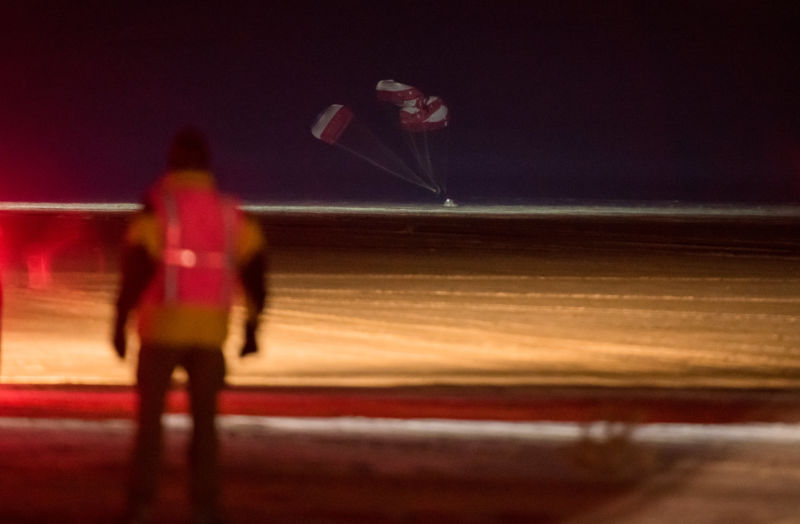
NASA/Aubrey Gemignani
Boeing released its third-quarter results on Wednesday, and there were promising numbers showing increasing revenues and narrowing losses as the multinational corporation continues its economic recovery.
However, amid these improving results, Boeing’s financials continued to be dragged down by its Defense, Space & Security division. This division, which includes missile production for the military and space activities such as satellites and the Starliner spacecraft, lost $1.7 billion during the first three quarters of this year.
In a conference call with analysts on Wednesday, Boeing’s chief executive, David Calhoun, and chief financial officer, Brian West, expressed disappointment in these results from the defense and space division. They reiterated their goal of returning the company’s defense and space businesses to profitability by the 2025 to 2026 period.
Notably, the pair pinned the blame for performance by its defense and space division, referred to internally as BDS, on fixed-price contracts. As the BDS division seeks a return to profitability, West said Boeing will not be using fixed-price contracts anymore.
Blaming fixed-price contracts
“Perhaps most importantly, we instituted much tighter underwriting standards,” he said. “As you know, part of the challenge we’re dealing with are legacy contracts that we need to get out from under. Rest assured, we haven’t signed any fixed-price development contracts, nor intend to. These moves are all fundamental to accelerating recovery by the 25-26 time frame.”
Boeing has several lines of business within the BDS division. West said Boeing’s missile programs are doing well, especially with the state of conflict in the world. However, the company has lost hundreds of millions of dollars on satellite-building programs.
“In these areas we took on fixed-price production contracts in a pre-pandemic environment with real technical innovation that we’re working our way through,” West said.
The company has both commercial and government satellite-building businesses. For example, it is building 11 satellites for the O3b satellite constellation in medium-Earth orbit, as well as working on other commercial satellites. In 2019, the company also received a $605 million fixed-price contract from the US Air Force to build a Wideband Global Satellite Communication satellite.
West said Boeing has also been struggling with fixed-price contracts in programs to build aircraft for the military, such as the KC-46 Pegasus aerial refueling aircraft, and NASA, with the Starliner crewed spacecraft.
“So for BDS this recovery is challenging at the moment,” West said. “But we believe the actions we’re taking will begin to gain traction and then accelerate for that 25-26 timeframe. Fixed-price development contracts will be substantially de-risked.”
Starliner getting on track
In reference to the Starliner spacecraft, West acknowledged that the company has faced delays in getting astronauts into orbit. “For Commercial Crew, while it has been a long road, we’re preparing to execute a successful crewed flight test next year and then fulfill operational launch commitments,” he said.
Boeing has been developing Starliner for more than a decade and is running six years behind its original goal of flying crew to the International Space Station for NASA in 2017. The company also has fallen more than three years behind SpaceX, which flew its first Crew Dragon mission with astronauts in May 2020 as part of the Commercial Crew program.
As it has sought to compete with SpaceX on a purely fixed-price contract for crew transport, Boeing has reported more than $1 billion in losses to date and still has yet to fly its first astronaut mission. In an update this week, the US space agency said Boeing continues to make progress toward an April 2024 launch of the “Crew Flight Test” on Starliner, which will carry Butch Wilmore and Suni Williams to the space station.
However, one critical test remains. After an issue was discovered with the soft links in Starliner’s parachute design this summer, Boeing has had to work with Airborne to strengthen the main canopy suspension lines. A drop test is planned for “early 2024,” NASA said. Following a review of data from this test, the parachute system would be cleared for a crew flight.

